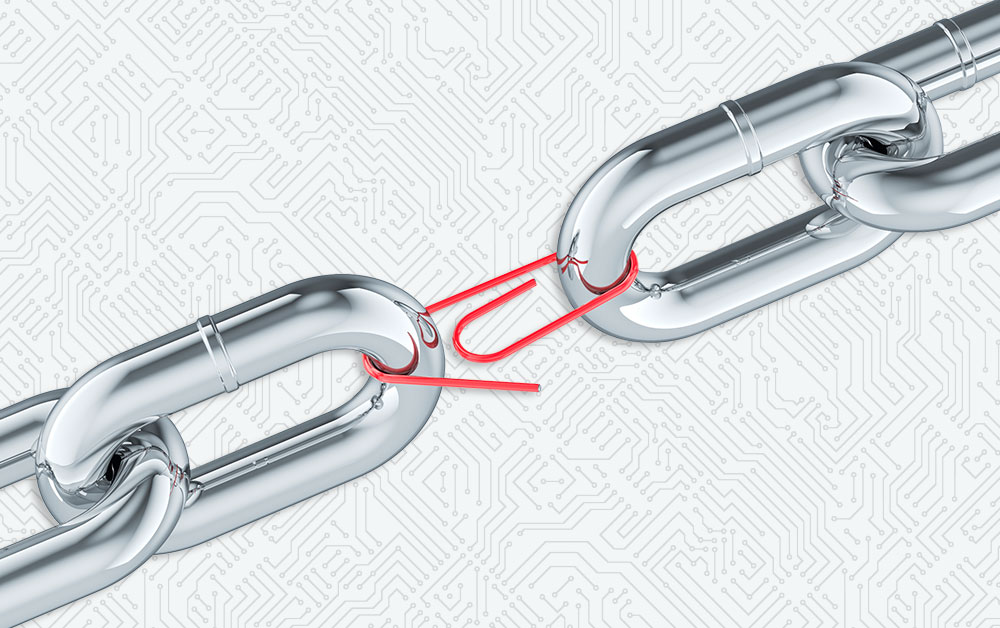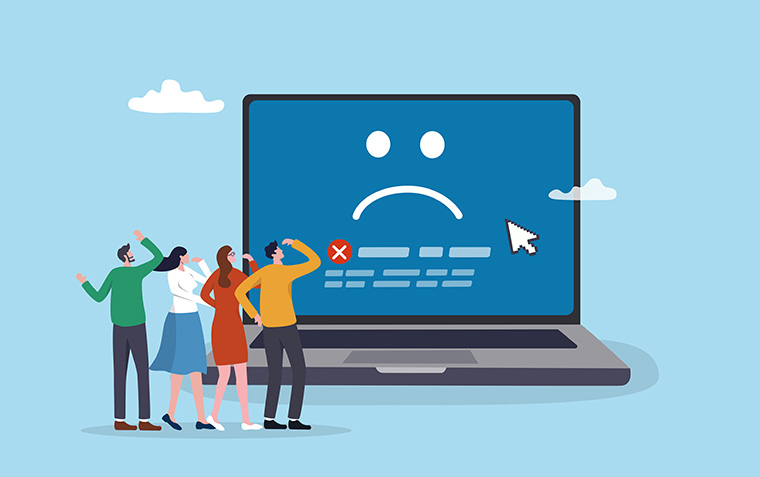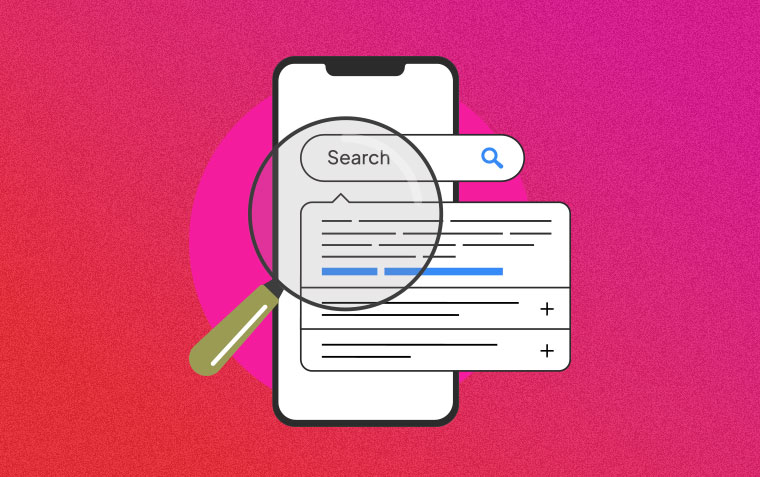What Makes a Website Prone to Broken Links?

Broken links occur when a hyperlink no longer leads to its intended destination. They can frustrate users who are trying to find information and can also negatively affect your Search Engine Optimisation (SEO). Broken links appear on every website over time, but some factors make certain sites more prone to them.
Frequent Content Updates
When you make changes to content, you open yourself up to internal links breaking.
Content Pages
Content management systems make it easy for you to make changes to your site but this ease of use comes with risks. Deleting or renaming webpages affects every internal link pointing to the original page. The links will either lead to a 404 Page Not Found error – or the content on the new page won’t make sense in the context of the original link.
Counteract this by:
- Setting up redirects to a relevant page when you delete a page.
- Perform an audit of the website for all links to the page to check if the content still matches the context.
Resources, Blog Posts, and Products
Large libraries of content are great for building your SEO and give you an easy way to expand your website over time. However, the larger they become, the more likely they are to cause issues.
- Changing a resource on your website can update the link path needed to access it.
- Links in blog posts can become hard to manage as the amount of content to check through grows.
- If you’re frequently updating the products and categories on your eCommerce website the URLs can change.
Counteract this by:
- Storing resources in Collateral and setting the link based on the name there instead of a link path that will change.
- Installing a link management system in your blog with centrally managed common links.
- Send your web developer a spreadsheet with old URLs and new URLs of catalogue changes for redirects to be set up.
Poor Redirect Practices
Poor redirect practices increase the risk of users landing on 404 pages instead of the content they expect. This undermines trust, disrupts navigation, and signals to search engines that your site isn’t being maintained – which harms SEO and site visibility over time.
Examples of Poor Redirect Practices
- Missing redirects
- Incorrectly set up redirects
- Over-reliance on temporary fixes instead of permanent redirects
Counteract this by:
- Having a redirection plan when URLs change
- Working with your web developer to properly set up well-structured permanent redirects
Unmonitored External Links
If your site links to an external site at all – including social media links – you’re at risk of these breaking unless you monitor them. Just as you update your website over time, the sites you link to are also likely to change. They might not set up redirects when changes are made, or the page that the old link does redirect to might not be relevant anymore to why you linked to it.
Older external links may also lead to articles, tools, or software that are outdated. Either the information is no longer correct, it is no longer available, or it links to an old version.
Counteract this by:
- Using a link checker to find external links.
- Remove links that are broken and manually check that working links are still relevant.
Incorrect URL Structure & Human Error
Because links are exact to the character they can break if there is even a single mistake or the wrong structure is used.
Absolute vs Relative Links
An absolute link is one that includes the full URL that it links to including the domain name while a relative link stays within the current website. These can cause broken links if you use one when you needed to use the other.
E.g. If you have an internal link set up as an absolute link and later change your domain name the link will no longer match.
Human Error
If you’re manually inputting URLs – or even copy/pasting – it’s possible to make mistakes. A typo can happen if you’re not paying attention or if your hand brushes the wrong key. You might select the wrong part or miss a section of the URL you’re copying. Humans make mistakes but they can be easily fixed.
Counteract this by:
- Using an absolute link structure for external links and relative link structure – from the first / after your domain name – for internal links.
- Check that a link you’ve just added goes to where you expect it to.
Website Migrations and Redesigns
When you make structural changes that alter navigation paths the URLs of pages, resources, and assets can change and will break if not updated. Migrating your site to a new web host with a different server is an example of the backend structure changing whilst a major redesign and rebuild is an example of how front-end structure can change. Rebuilding your website can also cause assets to be overlooked and either deleted or moved without realising they are used elsewhere.
Counteract this by:
- Performing a post-launch audit whenever you change web hosts or get a redesign.
- Choosing a web developer for your redesign that understands the risks of broken links and self-audits the site as they build.
Outdated Plugins, Themes, or CMS Issues
Using a CMS – like WordPress – that relies heavily on plugins and themes has a lot of benefits for ease of use but is very prone to throwing errors or creating broken links. Plugins and tools can auto-generate broken links when they malfunction, and unsupported or abandoned plugins leave your site open to hackers making unwanted updates, including changes to links.
Counteract this by:
- Keeping your plugins well maintained and updated.
- Remove any plugins that pose a security risk or are no longer supported.
- Choose a web developer that uses a secure and custom CMS that doesn’t use general plugins.
Lack of Routine Link Audits
Whilst performing a link audit won’t stop broken links from appearing they can help you find broken links faster to minimise the damage they can do to SEO. Without regular link auditing your risk of an unknown broken link causing issues on your site goes up. This risk increases the longer you go without an audit.
Counteract this by:
Performing regularly scheduled audits of the links on your site.
*****
Websites develop broken links over time as they – and the external sites they link to – change and grow. Setting up proper redirects and using correct link structures minimise the number of broken links that occur, and performing regular audits and link maintenance reduces the harm unknown links cause.
Contact us today to organise an in-depth audit and clean-up of the links on your website.





